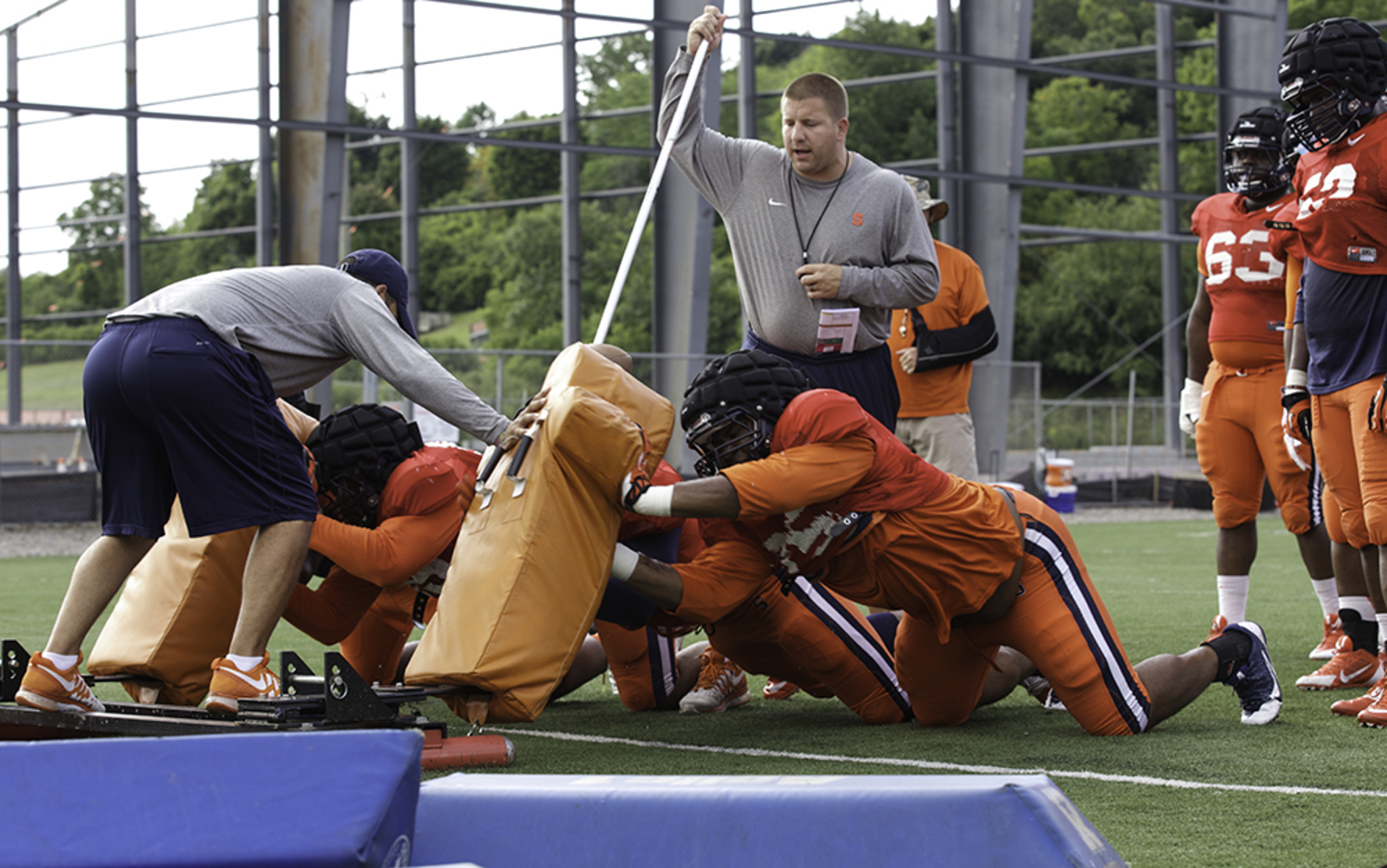Syracuse defense improves on the fly against quickening Orange offense
When he first got to training camp, Syracuse cornerback Julian Whigham questioned how he had conditioned during the summer.
Facing off against an SU offense that doesn’t plan to huddle in between plays, the junior was quickly winded.
“The up-tempo, it makes you have to think faster,” Whigham said. “You have to understand the concept and get the plays a lot faster and understand what you’re doing. Sometimes if you’re moving too quickly you can make mistakes.”
With the offense speeding up its play-calling system and with it, its overall play, the goal is to leave opposing defenses huffing and puffing behind it. Before SU faces Villanova, Central Michigan and, most importantly, Louisville to start its Atlantic Coast Conference schedule, it will go up against its own defense, which has used the faster competition to prepare for a rigorous conference slate.
“The hardest thing that we face is teams that run tempo really well,” linebackers coach Clark Lea said. “You’ve got to be able to play when you’re fatigued and any of those things are great.
“The formational challenges, the tempo challenges, the schematic challenges from the offense, you welcome those because it makes what’s coming in the fall seem a little bit easier.”
Lea said he’s seen defenses wear down against no-huddle offenses. The defenses “play in space,” he said, and often miss tackles. Considering Syracuse’s results last season as well as its upcoming schedule, the defense’s work will likely pay dividends in the season.

ACC teams such as Clemson, North Carolina, North Carolina State and Duke have averaged fewer than 25 seconds per play from 2011–13, ESPN.com reported.
Florida State beat Syracuse 69-3 on Nov. 16 with just 18:18 of possession, less than half of the time the Orange had the ball. Clemson needed two fewer minutes than Syracuse to run the same number of plays as the Orange in a 49-14 Tigers’ win on Oct. 5.
“It’s good for us. The speed is so fast, it gets our wind up, and it gets us going,” senior linebacker Cameron Lynch said. “I’m glad that they do that, and it gets us ready for any type of spread team, or anything. They run the ball, they pass the ball, so they get us ready for multiple dimensions of what we’re going to be seeing in the season.”
The differences in preparation start with assistant athletics director for athletic performance Will Hicks, who said the team cuts down the recovery time during training. In the past, he’d give about four times the amount of rest to the amount of time ran, and now that ratio is 1-to-1.
That running philosophy also applies to weightlifting, as Hicks will have the players sacrifice lifting heavier weights if it means more lifting and shorter rest periods.
“We got a good taste of it last year but this year, going a little faster, we’ve kind of refined it a bit more,” Hicks said.
While the root of the changes are geared toward Syracuse’s offense, they’re also helping to refine its defense into one that can not just compete, but be successful against faster-moving opponents.

Margaret Lin | Photo Editor
Head coach Scott Shafer has slowed the offense down in practice from time to time, but for the most part, this training camp has been about implementing an uncatchable attack. At first, that meant tired players and constant substitutions on the defensive side of the ball.
But the unit has begun to come into its own.
“I think last year kind of caught us off guard, and we weren’t sure where we wanted to be and how we wanted to approach it,” Whigham said. “But this year, we have a better understanding of what they’re doing, and we have a better understanding of what we want to do to approach it.”


